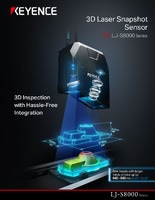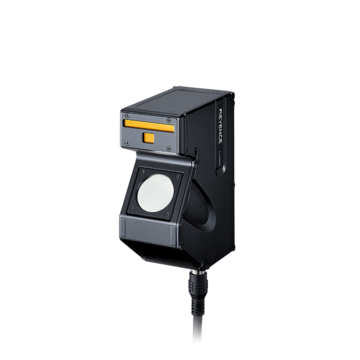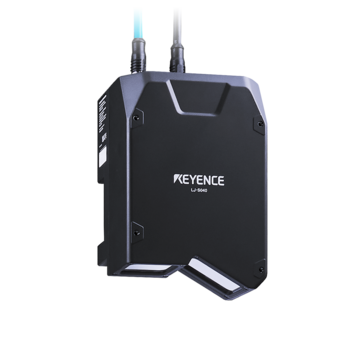Measurement Sensors
Dimension Measurement
Displacement Measurement
Automated Poultry Inspection Sensors
Automating visual inspection tasks in the food industry helps reduce labor costs, detect defects, and improve production efficiency. Even more so in the poultry sector, the implementation of automated poultry inspection is important in detecting bones to enhance product quality and safety and maximize yields for more profits.
Get detailed information on our products by downloading our catalog.
View Catalog![Automated Measurement and Inspection Examples [Food and Containers]](/img/asset/AS_138240_L.jpg)

Automated Poultry Inspection
Automated inspection in the poultry industry involves several processes that don’t rely on manual completion or decisions. Chicken automated inspection is one typical task carried out in automated poultry inspection systems.
For example, carcasses, thighs, and breasts are inspected for contaminants and defects using sensors or machine vision. Apart from detecting irregularities, measurement sensors and cameras are used to weigh and size portions for accurate classification and pricing.
Different types of poultry inspection machines can be used depending on the need. There are separate machines for detecting defects and contaminants in carcasses, measuring weight and fat content, and quality grading. Some solutions can provide multiple functions, too.
Key Features of Poultry Inspection Machines
There is no one-size-fits-all requirement for automated poultry inspection needs. The choice of inspection machine depends on the production stage and production line design. However, some of the most important features in an inspection machine are:
High-Resolution Imaging Capability
A vision system should be able to capture high-quality images so even the tiniest details can be exposed. In the case of 3D sensors, the chosen technology must be able to provide high-precision measurements.
Real-Time Detection
An inspection system must be able to provide real-time identification, so affected products can be separated or removed.
Integration with Production Lines
Especially when adding a new inspection machine to a poultry production line, the vision or measurement solution must seamlessly integrate with the existing conveyor system and other production equipment.
Reliable
Chicken processing lines also need to prioritize machines and equipment that can provide consistent performance even under extreme conditions, so they can meet the demands of consumers.
Discover more about this product.
Click here to book your demo.

Benefits of Automated Poultry Inspection Systems
Sensor technologies in automated poultry production provide lots of benefits. For one, they help overcome the subjectivity of human measurement, making for more yields and helping businesses satisfy customers. Consumers are very particular about their packages as they can notice even the slightest changes in product sizing and weight.
Also, an automated poultry inspection system is an effective way to reduce labor costs and prevent production setbacks. Inconsistent labor can delay production targets which businesses can’t afford in today's competitive market. A lot of inspection and measurement tasks that would otherwise be handled by employees can be done by machines and vision systems.
Furthermore, poultry processing automation for chickens helps with meeting the ever-growing and changing regulation standards. Every cut must meet certain safety and quality standards, which can be difficult to achieve via human inspection efforts. Fatigue, incorrect judgment, and a host of other factors could cause human staff to make incorrect decisions that may lead to costly recalls or regulatory fines.
Why Choose Our Sensors for Automated Poultry Inspection?
KEYENCE offers a line of measurement sensors for the food and beverage industry. These technologies range from sensors using confocal displacement sensing to those designed on the principle of triangulation sensing. These varieties help cater to different inspection needs.
Our sensors can be used in measuring sizes, weight, and other parameters that guarantee safe and quality food products getting to consumers. Even for 3D inspection and measurement, we have 3D laser snapshot sensors that provide industrial-grade performance.
Looking for a new automated poultry inspection sensor system or want to upgrade existing measurement systems in your production line? Contact us today.
Contact us to learn more about how our advanced technology can help take your business to the next level.
Contact Us
Related Products
Applications
Dimension Measurement
- Thickness and Width Measurement
- Step Height Measurement
- Inner and Outer Diameter Measurement
- Measuring Angles
- Meandering/Edge Measurement
Displacement Measurement
- Positioning and Stroke Length Measurement
- Vibration and Runout Measurement
- Deflection Measurement
- Measuring Eccentricity




